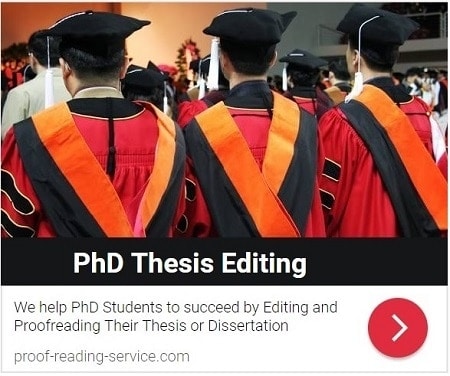
Table of Contents (Guide To Publication)
Part II: Preparing, Presenting and Polishing Your Work – Chapter 4
4.4 Finding Your Scholarly Voice
Although any author should work to establish a voice of authority when writing, this is nowhere more important than in academic and scientific prose: as a scholarly writer, you need to assume a professional stance and sound in every way like you know exactly what you’re talking about. In order to do this, it’s essential that you do know what you’re talking about, of course, but it’s entirely possible to know your subject intimately and work very hard to express the most profound of thoughts about it only to fail because certain aspects of the language and phrasing you use come across to your readers as awkward, imprecise or unprofessional. Attending to all the issues raised above – accurate and effective punctuation, appropriate use of abbreviations, consistent adherence to British or American spelling, complete sentences organised into well-developed paragraphs, a well-planned paper using sound sources and methods to construct a meaningful argument, and so on – contributes to a written voice that speaks with professional authority, but there are a number of other matters, some of them seemingly small details, that often prove problematic and can literally make or break a paper by either engaging and convincing or losing and annoying readers.
4.4.1 Vocabulary: Formality, Precision and Variety
A scholarly written voice is necessarily a formal written voice – not quite as formal as it once was, of course, but the principle remains. This means that everything about the language you use in a paper you’re preparing for publication in an academic or scientific journal should be absolutely correct, precise and professional in grammatical, syntactic and orthographic terms. Although once as basic as methods and results, formality has become especially challenging in a climate of digital social networking that encourages the use of informal (and often incorrect) language and tends to suggest particularly to younger scholars that such informalities are equally acceptable beyond the realm of tweeting and text messaging. They are not and should be strictly avoided in formal academic or scientific prose, including CVs, proposals and job applications, as well as research papers, theses and scholarly books. The rewards of polishing your writing skills are significant, and there’s always the possibility of discovering that carefully crafted formal prose is a rather effective means of expressing complex ideas.
One of the easiest and most obvious ways in which to increase the formality as well as the precision of your writing is to choose your vocabulary with special care. This can mean using the exact same word repeatedly or varying your vocabulary, with each of these appropriate in different situations and for different reasons. Adding variety to your vocabulary is essential to producing an eloquent writing style that will hold the interest of readers, and many words in a sentence can easily be changed to create variety without altering meaning. Avoid, for instance, starting every sentence with ‘however,’ ‘therefore,’ ‘thus,’ ‘moreover’ or ‘furthermore’ – use these but mix them up in your prose. Use ‘particularly’ in some instances and ‘especially’ in others; use ‘as well as’ instead of ‘and’ at times, and ‘yet’ or ‘however’ instead of ‘but.’ When reporting results of trials and tests, vary ‘showed’ with ‘revealed’ or ‘suggested’ or ‘indicated,’ and when comparing ideas, categories and results, use ‘more than’ and ‘less than’ as well as ‘compared with’ and ‘contrasted with.’ Be careful, however, when eliminating words to vary your language. For example, in ‘pink shirts were given to 12 of the men, but blue to women’ the reader easily supplies the verb (‘were given’) missing from the second half of the sentence and it’s also fairly clear that ‘blue’ stands for ‘blue shirts,’ but he or she may be wondering ‘to what women?’ Does the author mean all of the women in the study although only 12 of the men were given shirts? Clearly, more information is needed here, and those of a more traditional persuasion would say that all the missing words should be included when it comes to reporting precise data about methods and results. A more flexible approach is to use enough words (and the right ones) to make your meaning absolutely clear, but you can still vary your language somewhat while doing so: ‘but blue ones to the same number of women.’
Be extremely careful when varying (or eliminating) terms that define aspects and elements of your research, methodology and argument or report precise results. In the case of comparison, for instance, be sure to explain with precision the exact details of each side of a comparison or contrast: do not assume that your readers know what you’re comparing or contrasting, and do not leave out essential details of the comparison. ‘We compared the scores the girls earned in the third trial with the boys’ is simply wrong: the scores earned by the girls were no doubt compared with the scores earned by the boys (not the boys themselves), and the boys’ scores were probably obtained in a numbered trial as well, so the reader needs more here than the author has provided. Be sure to use the same terms and definitions for the same concepts or categories throughout your paper, especially when those concepts and categories are central to your argument: for example, if you’ve introduced your study groups as ‘surgical group,’ ‘nonsurgical group’ and ‘control group,’ do not suddenly change that terminology part way through your paper; if your questionnaires are numbered 1, 2 and 3, avoid referring to them without the numbers because this can increase the possibility of unnecessary confusion; and if your study involves participants who are young women and young men, do not call them ‘girls’ and ‘boys’ unless they actually are girls and boys (some journals have strict rules about age in relation to these terms, so remember to check the guidelines as well as using common sense with regard to such terms: i.e., people over 20 and usually over 18 are never girls and boys).
All scholars use specialised terminology at times, and certainly such terminology can communicate with a precision that other words simply can’t manage. If there’s any doubt about your readers’ familiarity with the terminology you use in your paper, you will need to take special care to explain it (and the ideas behind it) with precision and as thoroughly as necessary to allow your readers to understand the significance of your methodology and argument. If you’re writing for a specialised journal, you can assume an editor (and certainly reviewers) familiar with the terminology associated with the area of specialisation, but you still need to use specialised vocabulary carefully, and never use a smattering of scientific or theoretical terms as a substitute for explaining ideas. The best scholarly writing demonstrates not just a proficiency in using specialised terminology but also a deep understanding of the ideas behind the terminology, and it explains those ideas for its readers while taking them (both ideas and readers) in new directions. Any abbreviations of specialised terminology should be used with the same precision as the original terms, and remember that if you use a list to define terms or outline categories of any kind, your readers will likely return to the list (since lists are particularly easy to locate) in order to review and check the terms you’ve used if anything does prove confusing, so be especially careful to use those terms and categories in the exact same forms elsewhere in the paper (see also Section 3.2.2 on formatting lists).
Closely related to specialised terminology is the jargon peculiar to a profession or field of study. Such jargon often includes specialised vocabulary, but also tends to use convoluted syntax or awkward word order and can prove to be unintelligible (or very nearly so) to readers. For instance, ‘a low young voter turnout election’ is simply poor English and not nearly as effective for communicating meaning as ‘an election with a low turnout of young voters.’ The word ‘jargon’ is often defined in dictionaries as ‘meaningless writing,’ ‘vague language’ or ‘gibberish,’ none of which the scholarly writer wants in his or her text. Such language is often the result of authors being so immersed in their respective fields of study that they are unaware that they’re failing to communicate clearly in plain English, even to many in their own fields, but sometimes I suspect it is used to create an impression of learnedness or mystique. If readers don’t understand what they’re reading, however, any impression of the author’s learning becomes frustrating instead of impressive, and while mystique certainly has its proper place, it is not in a carefully written scholarly article. If you must use jargon, keep it to a minimum and be sure to explain its meaning on first use.
Numbers aren’t exactly specialised terminology, but the accurate punctuation (point/full stop, comma or neither) and formatting of numbers (as words or numerals) can be complicated, and all the more so because the rules tend to be very precise yet vary from style to style and journal to journal, so it’s essential to consult the guidelines and follow the patterns required in detail. There are, however, a few general rules that reappear frequently across styles and are consistent with the expectations of most academic and scientific journals. They are good, too, to keep in mind if you’re not following any particular style or guidelines, but formatting numbers according to your own methods.
- Never start a sentence with a numeral: whatever the number is, it needs to be written out as a word. So it should be ‘One participant,’ not ‘1 participant,’ and ‘Fifty-six men,’ not ‘56 men.’ For larger numbers that would be cumbersome to write out (e.g., 14,386), it’s best to reword the sentence so it doesn’t start with the number.
- Numbers directly associated with measures of any kind should be written as numerals: ‘4 mm,’ ‘23 cm,’ ‘130 mph,’ ‘8 m’ and so on.
- In instances other than the two noted above, numbers 10 and over should be written as numerals (‘13 participants,’ ‘a population of 426 women’ and ‘56 men’), while numbers under 10 should be written as words (‘four trials,’ ‘six students’ and ‘eight participants’).
- Ordinal numbers should follow the same pattern as cardinal numbers: that is, numbers 10 and over should be written as numerals and numbers under 10 should be written as words (‘the 56th man in the second trial’ and ‘the eighth participant in the 77th trial’).
- When writing numbers as numerals, be sure to observe English convention – 1,389.09 for ‘one thousand, three hundred and eighty-nine point zero nine,’ not 1.389,09 – but also check the journal guidelines in case there are any special instructions about using numbers. A few journals will ask for less punctuation, eliminating the comma from the number above (1389.09), for instance.
Finally, formal English prose does not use contractions. Contractions are formed when letters are left out of words and indicated by an apostrophe instead. Examples based on negatives (‘not’) are especially common – ‘don’t,’ ‘doesn’t,’ ‘won’t,’ ‘shouldn’t,’ ‘wouldn’t’ and ‘couldn’t’ are common examples – and often slip into academic and scientific prose. They won’t create confusion, and I use them throughout this Guide to produce a casual tone, but ‘casual’ is not what you want in a formal academic or scientific paper, so contractions should always be avoided. In my experience, scholars don’t usually intend to use contractions in their writing, but they are so common and natural in normal speech that they can all too easily creep into writing whenever an author isn’t entirely vigilant. So once you have your paper drafted, do a search for apostrophes and expand any contractions that turn up, leaving apostrophes for possessives (or single quotation marks) only.
This article is part of a book called Guide to Academic and Scientific Publication: How To Get Your Writing Published in Scholarly Journals. It provides practical advice on planning, preparing and submitting articles for publication in scholarly journals.
Whether you are looking for information on designing an academic or scientific article, constructing a scholarly argument, targeting the right journal, following journal guidelines with precision, providing accurate and complete references, writing correct and elegant scholarly English, communicating with journal editors or revising your paper in light of that communication, you will find guidance, tips and examples in this manual.
This book is focusing on sound scholarly principles and practices as well as the expectations and requirements of academic and scientific journals, this guide is suitable for use in a wide variety of disciplines, including Economics, Engineering, the Humanities, Law, Management, Mathematics, Medicine and the Social, Physical and Biological Sciences .






